Search
09274 Galvanic Corrosion Inhibition: Validation of Simple Laboratory Testing
Also Purchased
99319 CONTROL MEASURES TO MITIGATE GALVANIC CORROSION
Product Number:
51300-99319-SG
ISBN:
99319 1999 CP
$20.00
07244 Mitigation of Galvanic Corrosion in Seawater Piping Systems
Product Number:
51300-07244-SG
ISBN:
07244 2007 CP
Publication Date:
2007
$20.00
96063 GALVANIC CORROSION IN OIL AND GAS ENVIRONMENTS
Product Number:
51300-96063-SG
ISBN:
96063 1996 CP
$20.00




